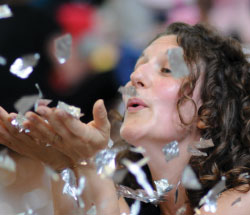The beginning of Sponge the show has two stories. One is that Oksana and I have been working creatively with sponge for over 20 years. Quite literally the sponge squares that you buy in the pound shop. We’ve rolled in it, thrown it, popped, squeezed, built, balanced and quite simply explored the potential of the material and the stories that unfold through dancing with it. It’s one of my ‘go to’ tools for engaging a group I’ve just started working with. It has a unique multi-sensory quality, light enough the create structures, soft enough to make a bed, flexible enough to squash and squeeze. Sponge is the bees knees.
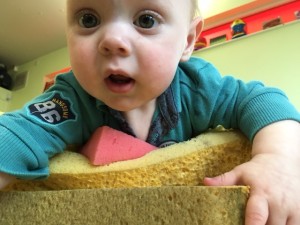
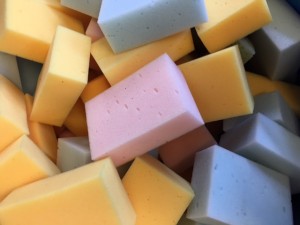
The more unusual story behind the show is that when my husband and I adopted our daughter in 2013 I made an astounding discovery about brains, those spongy, every growing, changing and absorbing cells that make up our grey matter. Many people, just like me, tread the path of becoming adoptive parents, the desire to parent – perhaps for the first time, or to parent again – motivating them through the ups and downs of the adoption process. For me, as a dancer, avid researcher and maker of theatre it was during my adoptive parent training that I found out about the science behind what is essentially the cornerstone of my artistic practice; improvisation.
Dance improvisation is movement made up on the spot. In most of our work it’s about communication between Oksana and I, us and the children we dance with and the parent and their child. It’s an authentic and immediate expression of ideas and feelings. It relies on both of parties listening to each other non-verbally, tuning into each other with empathy. Each person has an acceptance of the movement ‘offer’ that the other makes, it’s non-judgmental, and there’s a responsibility of the persons involved to ‘care’ for the other partaking in the activity. This is what we model in performances and in our participatory work. Parents are drawn in by the environments we create and the stories we tell. It’s actually parental instinct to mirror our children and join them in an improvised conversation based on facial expressions, noises and movement. Through using us as a mirror our children learn that they are loved, safe and valued. They use our faces and gestures to learn about their world. What blew my mind away that day sitting in my adoption training was the impact on the child when this interaction is non-existent or not positive.
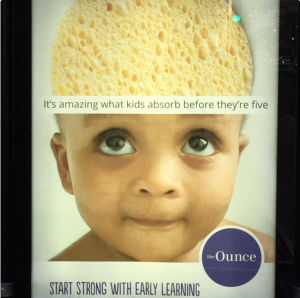
That day, sitting in the offices of the adoption agency, became a tipping point for me. Dance, communication, interaction, creativity, patience, empathy, acceptance – you can throw it all in one big pot and get one word back – attachment. The word is banded about a great deal, and I knew partly by instinct, and partly by raising two birth children, that the bond between a child and their significant adult was important. But what I didn’t know was that strong, positive attachment is the number one signifier for a ‘successful’ life (for successful read healthy relationship patterns, resilience, emotionally integrated). It’s fascinating watching the attachment process with an older child, that stage with a baby when you’re never apart and you don’t know here you end and they begin is the same when you become an adoptive parent. It’s a real eye opener and one that we explore in Sponge the show through the use of sponge feet and legs (affectionately called Splegs). They journey together, our daddy and baby splegs, with the joys and pitfalls hopefully documented along the way.
As an artist I marvel at the brain and it’s spongy plasticity. I also shrink in horror at the knowledge that neglect or trauma in the first year of life can damage the core of the brain sometimes with life long consequences. But I also prickle with goosebumps at the thought that improvisatory approaches can provide the opportunity to build fundamental neural pathways and make a difference.
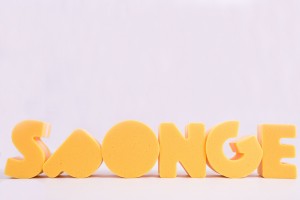
So Sponge was born. We know it’s about squeezing our nearest and dearest, about a child’s brain (and ours) being like sponges soaking up information at an alarming rate. It’s about children extracting and squeezing out all our best resources; time, patience, love and leaving us exhausted and wrung out, like a limp soggy sponge. It’s about the joy when you see those young brains joyfully wander off, engrossed in what life has to offer, making connections and creating.

